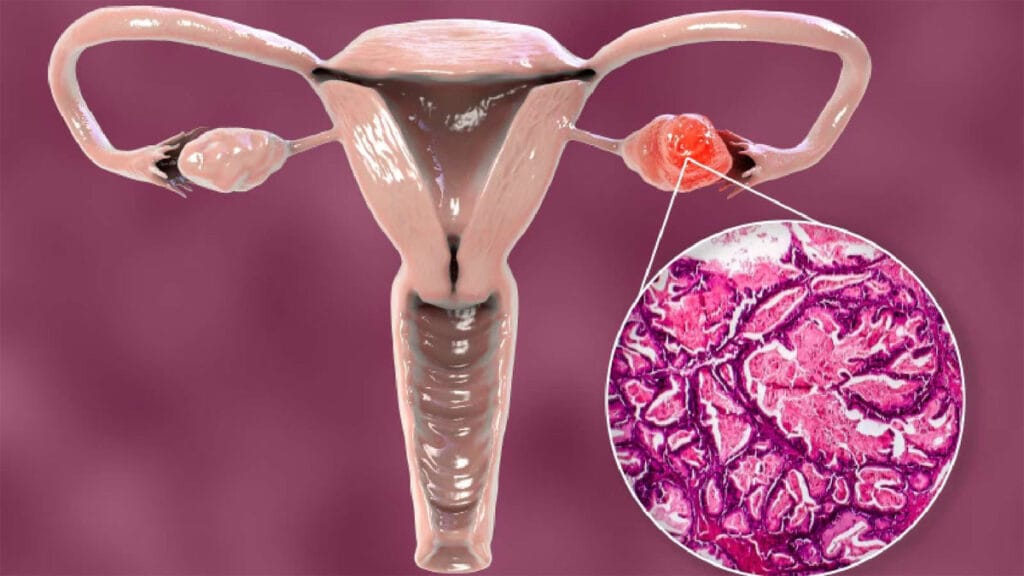Ovarian cancer is a rare type of cancer that affects less than 1 million people in India every year, but it accounts for more casualties than any other female reproductive organ cancer. This type of cancer is hard to detect in its early stages. It is usually detected when it has spread within the abdomen and pelvis, but it is tough to treat the cancer at this late stage. Therefore, the best time to treat it is during its early stages.
The risk factors of ovarian cancer are age, obesity, pregnancy history, estrogen therapy, family history, smoking, PCOS (polycystic ovary syndrome), smoking, fertility treatment, and IUDs (intrauterine devices). The symptoms include problems related to excretion, the abdomen area, and the menstrual cycle. The earlier such type of cancer is detected, the better it is for treatment. Pelvic examination, special blood tests, radio imaging techniques, and biopsies can make a diagnosis. The treatment for ovarian cancer depends on how far the cancer has spread and the patient’s general health. Treatment usually involves a combination of surgery and chemotherapy.
SYMPTOMS
Adnexal masses, in many cases, are asymptomatic – i.e., the patient does not experience any major symptoms. In such cases, the mass may be diagnosed during a routine pelvic examination. In other cases, the symptoms include:
- Unusual abdominal bloating
- Pressure in the abdomen or pelvis
- Abdominal pain
- Back pain
- Weakness and lack of energy
- Infertility
- Torsion (Twisting of the mass)
- Other symptoms related to the root cause
DIAGNOSIS
Although different masses can be diagnosed with different techniques, a transvaginal ultrasound can be very useful in many cases. The other techniques for diagnosis of adnexal masses are as follows:
- CBC
- Cervical Culture
- Ultrasound
- USG + Doppler
- MRI (if indicated)
- Tumor Markers – CA 125, Beta hCG, AFP, CEA
But there is no combination of diagnostic tests /algorithm that will absolutely differentiate between malignant and benign adnexal masses. Only histology can provide the absolute diagnosis.
ROLE OF LAPAROSCOPY IN THE MANAGEMENT OF ULTRASOUND
Laparoscopy (with consent for laparotomy taken) is the dominant procedure for the management of adnexal masses that are benign. It presents several advantages over laparotomy, such as:
Small incision: Laparoscopy is a minimally invasive surgery and the incisions made are of the size of 5-15mm.
Decreased stay: The hospital stay if any, due to laparoscopy is relatively much shorter than the stay required due to laparotomy.
Decreased pain: Since the incisions are smaller the pain is also considerably lesser.
Better Vision: The high magnification provided laparoscopy allows for very accurate identification of adhesions and also allows for very accurate correction of these with restoration of normal anatomy.
Decreased adhesion formation and potential complications: With better vision due to laparoscopy the doctor is better equipped to accurately restore of normal anatomy, hence reducing the possibility of adhesion formation and future complications.






